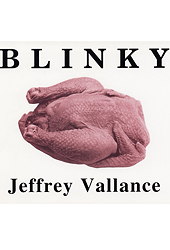Art
Graffiti-bot
One of the less practical automatons, the juvenile delinquent of the robot species.
Learn more here.
Posted By: Paul - Sat Feb 09, 2013 -
Comments (2)
Category: Art, Avant Garde, Performance Art, AI, Robots and Other Automatons, Juvenile Delinquency
Last-Meal Plates
Artist Julie Green creates plates that show the last meals of death-row inmates. She's been creating these plates for 13 years and now has around 500 of them. The most popular last-meal request? Junk food from KFC and McDonald's. [Daily Mail]
Posted By: Alex - Wed Jan 30, 2013 -
Comments (3)
Category: Art, Food, Junk Food, Prisons
Twinkies Art
Artist Nancy Peppin specializes in using Twinkies in her work. She sees herself as working in the tradition of Warhol. His Campbell's soup can art was her initial inspiration. Sometimes she makes art out of the sponge cakes themselves, and sometimes she creates paintings, photographic prints, etc. that feature Twinkies. Either way, they're her muse.She's been creating Twinkies art since 1975, but thanks to the current woes of Hostess, she's been getting lots of attention recently. What I'm curious about is how she preserves the Twinkies to make sure they don't rot. Because that idea of Twinkies never rotting is just an urban legend. I also couldn't find any info on how much her pieces go for. [huffpost]
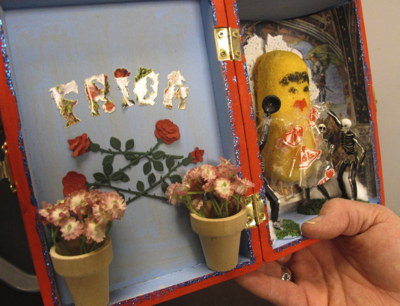
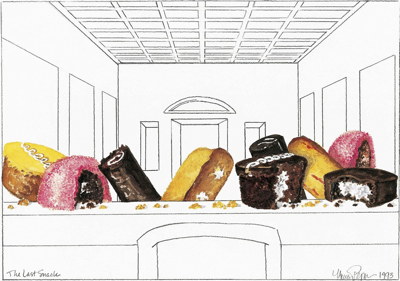
Posted By: Alex - Mon Jan 28, 2013 -
Comments (4)
Category: Art, Food, Junk Food
Menstruation Machine
MOMA (Museum of Modern Art) brings us the Menstruation Machine, created by the artist Sputniko!: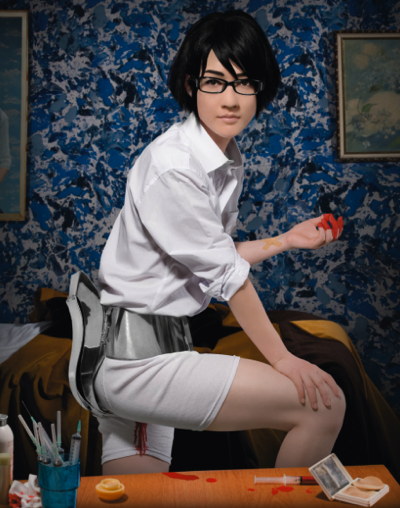
Posted By: Alex - Thu Jan 24, 2013 -
Comments (6)
Category: Art, Body, Torture
Soap-Pooping Pigeons
GeoBeatsNews reports on an experimental London-based project to feed pigeons a special diet that'll make them poop soap. That way, instead of dirtying the city as they fly around, they'll clean it.The video makes it sound like this is an official government-sponsored project. But as far as I can tell, it's an art project called "Pigeon D'Or" by Cohen Van Balen. That is, it's probably not really happening. Van Balen offers this description of the project:
Posted By: Alex - Tue Jan 22, 2013 -
Comments (4)
Category: Animals, Art, Baths, Showers and Other Cleansing Methods, Excrement
60x1.com
The lengthy url http://www.111111111111111111111111111111111111111111111111111111111111.com/ takes you to a website created by artist Kenneth Tin-Kin Hung. He refers to the site as "60x1.com." Elsewhere he explains that the site is an artistic experiment in bad website design:60X1.com is designed to be user-unfriendly, aiming to serve as a counter structure to the model of most successful websites — portal sites where all the links are contained in one interface in order to generate a maximum number of hits, instead 60X1 is designed to generate a minimum amount of hits with it's long domain name, one way navigation and it's big file sizes of images, existing as an experiment to test viewers' patience and expectation, as well as calling the internet into question as a forum for communication.
The challenge, as you click through the splash pages, is to find the word "enter" which is hidden somewhere on each page. Until you find that word, and click on it, you won't be able to get to the next page. I got about five pages in before I gave up. So I guess his experiment in bad site design worked! I've reproduced a few of the splash pages below.



Posted By: Alex - Mon Jan 14, 2013 -
Comments (4)
Category: Art, Internet, Strange Websites
12th century reliquary that looks like the Aurora shooter
I was looking through a book of art history when I came across this photo of a reliquary of St. Vitale, made around 1170. A reliquary is a container for holding sacred relics, such as the bones or body parts of saints. This reliquary, made out of bronze with encrusted enamel, held pieces of what were supposed to be St. Vitale's skull. The skull pieces "could be placed in (and removed from) the container through a concealed opening at the rear of the sculpted head." To be honest, I'm not sure which St. Vitale this is supposed to represent, because there are a couple of them.But what really struck me, as soon as I saw the photo, was how much the reliquary, with its creepy staring eyes, resembled James Holmes, the Aurora shooter. Compare for yourself!

Posted By: Alex - Sat Jan 12, 2013 -
Comments (4)
Category: Art, Costumes and Masks, Death
The Pasta Art of Vernon Spicer
Vernon Spicer was in his 60s when he began his career as an artist. One night he was woken by a dream, "I could see something that had a three-dimensional design, one that involved me using sticks to create.” His wife suggested the sticks were pieces of uncooked spaghetti. So he started using uncooked pasta to make paintings. As the Montgomery Advertiser puts it, "this man really knows how to use his noodle to utilize noodles."If you decide to buy one of his paintings — I think the three below are his entire oeuvre — the price is $1800. He hasn't sold any yet, so you have a chance to be the first!
The pictures are from the Selma Alabama Photo Blog, which has higher-res versions posted. Though I suspect the pasta paintings, in real life, have a 3-D effect that the photos can't convey.



Posted By: Alex - Sat Jan 05, 2013 -
Comments (3)
Category: Art, Food
The Art of Explosionism
Andrew Lausman of Lakeland, Florida has created a new genre of art. He calls it "explosionism." As far as I can tell, it involves dipping firecrackers in paint and shooting them at a canvas. A few of his works, which I found on his facebook page, are below. He focuses on space themes — galaxies and nebulae — perhaps because it would be hard to do a still life with flowers using firecrackers.Lausman's art hasn't allowed him to quit his day job yet. (He's a dental assistant.) But he does have his first exhibition opening this Friday. [theledger.com]




Posted By: Alex - Thu Jan 03, 2013 -
Comments (3)
Category: Art, Explosives
Patrick O’Connor, Wrestler and Artist
There aren't that many people who seriously pursue art and wrestling at the same time, but Patrick O'Connor was one of them. Back in the 1940s, he was heavyweight wrestling champion of Ireland, but also had a Greenwich Village art studio. He was an artist of the "conservative Realist and Romantic school." Apparently he viewed art as his true passion. Wrestling was just a way to make money. From The Evening Independent, Sep. 9, 1944:Unfortunately I haven't been able to find any examples of his art, except for the ones that can be seen behind him in the pictures below. O'Connor is the one with the beard. The pictures were taken in his art studio.
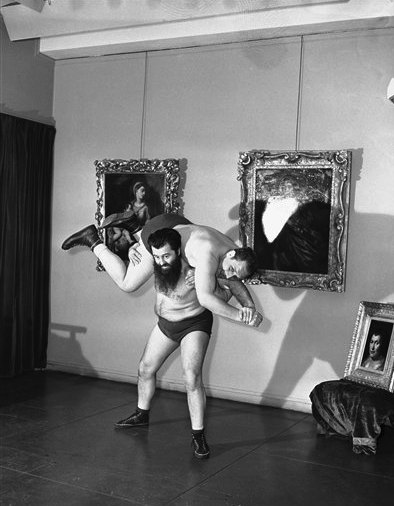
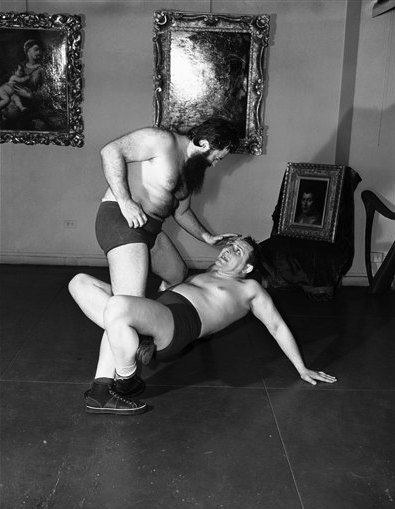
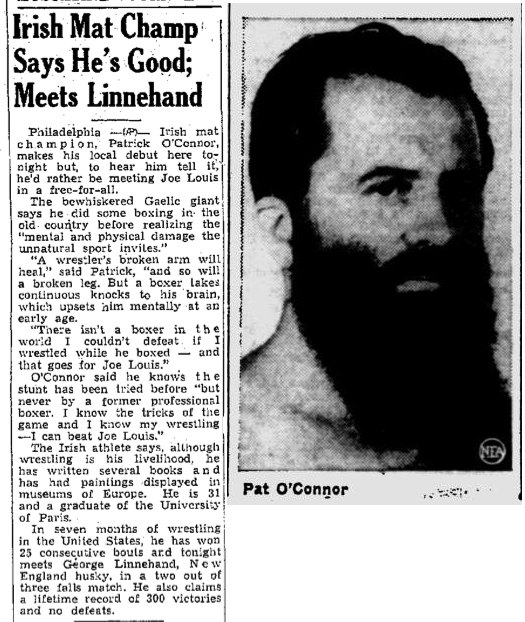
Posted By: Alex - Wed Jan 02, 2013 -
Comments (3)
Category: Art, Sports, Wrestling, 1940s

| Who We Are |
|---|
| Alex Boese Alex is the creator and curator of the Museum of Hoaxes. He's also the author of various weird, non-fiction, science-themed books such as Elephants on Acid and Psychedelic Apes. Paul Di Filippo Paul has been paid to put weird ideas into fictional form for over thirty years, in his career as a noted science fiction writer. He has recently begun blogging on many curious topics with three fellow writers at The Inferior 4+1. Contact Us |




